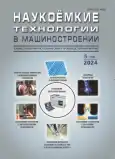The analysis of machining facility used for short-run production, large-scale or mass-production operations has been carried out. Their disadvantages are presented in the work, i.e., in a short-run production, superuniversal machining center units are used, being primarily made for processing techniques, but not for the surface of the part. Such machines, having excessive wide technological and technical capabilities, remain untapped in the workplace, becoming low effective in the application; in mass production, designed process-specialized machines can cover only a small part of the common typical surfaces, that means, there are no machines for making bearing arrangement, in mass production operational machines are designed with no reconfiguration, which makes their application impossible when there is some introduction of changes in the structure of the manufactured part. To eliminate these disadvantages, it is necessary to design specialized machines for manufacturing in all types of production of programme units for parts surfaces. Depending on the type of production, machines should be designed for the manufacture of different groups of surface modules (SM) types. In a short-run production, a large number of types of SM should be manufactured on one machine, and with an increase in the production cycle, the number of SM types manufactured on one machine should decrease. Taking into account the high frequency of sets of bases in manufactured parts, it is necessary to expand the group of specialized machines through their design for the manufacture of sets of bearing arrangements, where the production of their diversity is limited. The machine tool holding for the manufacture of all SM will allow changes to be made to the designing technological processes technique. So, technological operations should be aimed not at machining individual surfaces or groups of surfaces, but at one or more types of SM. This will improve the quality of manufacturing activity for parts production by reducing the number of operations, since one or more SM will be machined and it will reduce the labor intensity of their engineering process due to the use of a data bank of modules of process industries for the manufacture of SM.
 3-8
3-8


 9-13
9-13


 14-24
14-24


 25-30
25-30


 31-39
31-39


 40-48
40-48











